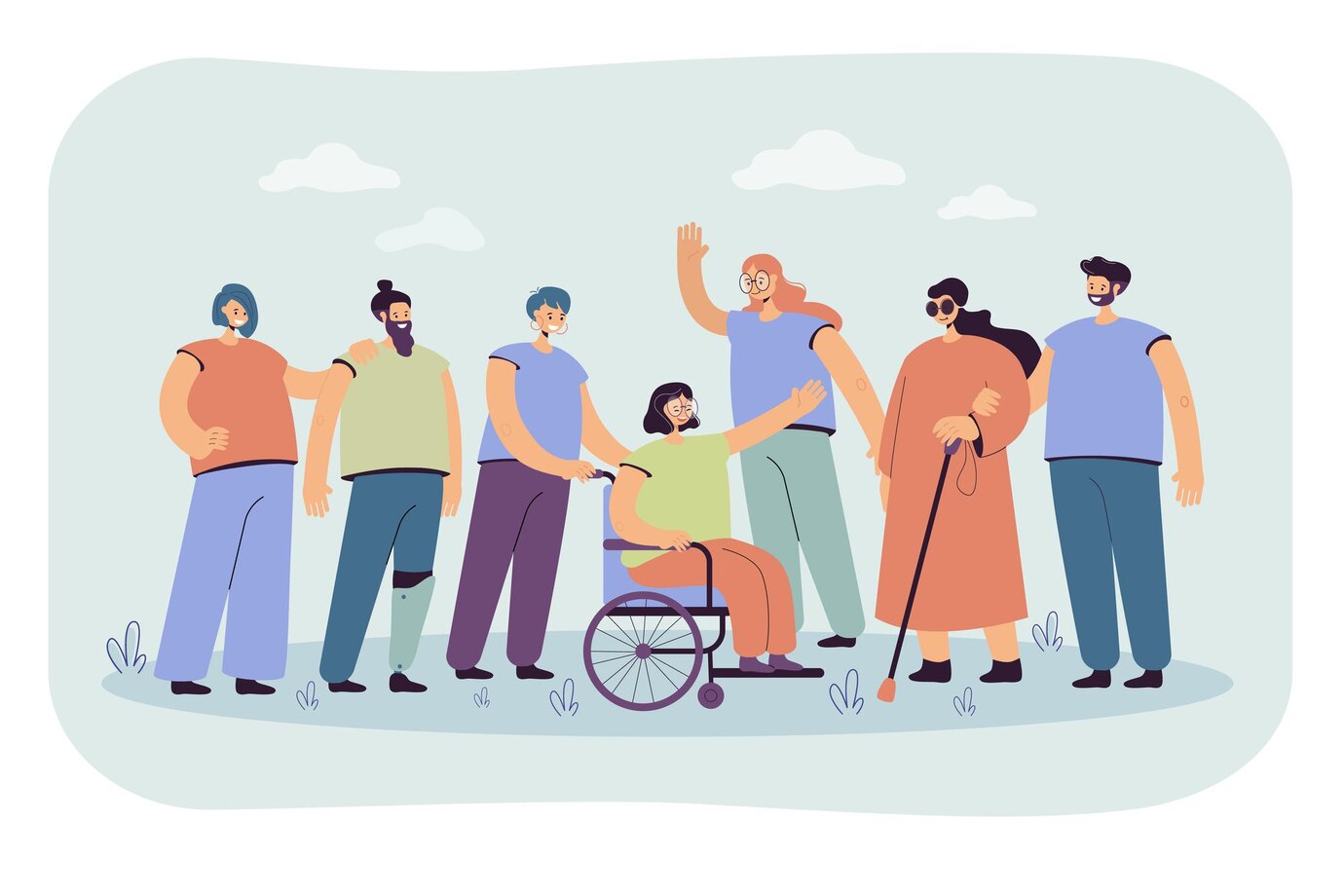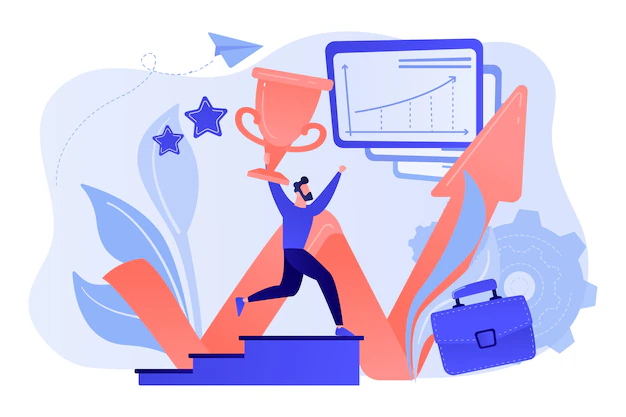29 Diversity And Inclusion Activities For Employees


By Signe Hegart
October 12, 2023
In the dynamic landscape of today’s workforce, companies are increasingly recognizing the paramount importance of diversity and inclusion activities. These values not only contribute to establishing a fair and inclusive work environment but also serve as catalysts for innovation and business triumph. A compelling approach to advance diversity and inclusion is by introducing a myriad of activities and initiatives that not only engage and educate employees but also uses employee incentives to activate their participation. In this blog post, we will delve into 29 diversity and inclusion activities for employees that companies can adopt across departments, complete with incentives to encourage enthusiastic involvement.
Jump to section
What are Diversity and Inclusion Activities?
Diversity and inclusion are not just buzzwords anymore. They have become essential components of any successful organization. Companies are realizing the importance of creating an inclusive workspace where employees from different backgrounds, cultures, and perspectives can thrive.
One effective way to promote diversity and inclusion for the employees is through activities and initiatives that bring people together and celebrate their unique differences. These activities can help foster a sense of belonging, strengthen relationships, and create a more harmonious work environment.
Why are Diversity And Inclusion Activities important?
Diversity and Inclusion Activities are important for several reasons, as they contribute to creating a more equitable, productive, and harmonious workplace. Here are some key reasons why Diversity and Inclusion Activities are crucial:
- Promoting Equal Opportunities: Diversity and inclusion activities help ensure that all employees, regardless of their background, have equal access to opportunities, resources, and career advancement. This promotes fairness and reduces discrimination.
- Fostering Innovation: Diverse teams bring together a variety of perspectives, experiences, and ideas. Inclusion activities encourage employees to share these perspectives, leading to more creative problem-solving and innovative solutions.
- Enhancing Employee Engagement: When employees feel included and valued, they are more engaged and motivated. This leads to higher job satisfaction, productivity, and retention rates.
- Attracting and Retaining Talent: Organizations that prioritize diversity and inclusion are more attractive to a diverse pool of job seekers. Additionally, they tend to retain employees for longer periods, reducing turnover costs.
- Improving Decision-Making: Inclusive teams are more likely to make well-rounded decisions because they consider a broader range of perspectives and potential consequences.
- Increasing Customer and Market Understanding: A diverse workforce can better understand and relate to a wide range of customers, leading to improved customer service and market insight.
Related: 23 Employee Wellness Programs Worth Considering
29 Diversity And Inclusion Activities
To help you get started, here are 29 diversity and inclusion activities that you can implement in your workspace:
1. Diversity Training

Diversity training is an essential tool for organizations committed to creating inclusive and equitable workplaces. It empowers employees with the knowledge and skills to recognize and celebrate differences, fostering a culture where diversity is not only acknowledged but also valued and leveraged for innovation and growth. Ultimately, diversity training contributes to a more engaged, harmonious, and successful workplace.
2. Implicit Bias Workshops
Implicit bias workshops play a vital role in the ongoing effort to create inclusive workplaces by addressing the often-hidden biases that affect our judgments and behaviors. Implicit bias workshops are a powerful tool in the quest for workplace inclusivity. By fostering self-awareness, empathy, and actionable strategies to counteract unconscious prejudices, these workshops contribute to a more equitable and harmonious work environment, benefiting both employees and the organization as a whole.
3. Diversity Surveys
Diversity surveys are a vital tool for organizations committed to creating inclusive, equitable, and diverse workplaces. Diversity surveys provide a snapshot of the current workplace climate. They gauge employees’ experiences, perceptions, and feelings regarding diversity and inclusion within the organization. This information is crucial for assessing the organization’s progress and identifying areas that require attention.
Incorporating gift cards as survey incentives, when done thoughtfully and transparently, can amplify the effectiveness of diversity surveys. It encourages active employee participation, ultimately yielding more comprehensive and actionable insights that contribute to a more inclusive and equitable workplace.

Send yourself a gift card
4. Cultural Potluck Lunches
Cultural Potluck Lunches are a delightful and meaningful practice that brings employees together to celebrate diversity, foster inclusion, and build a strong sense of community within the workplace. Cultural Potluck Lunches are more than just enjoyable gatherings; they are powerful tools for promoting diversity and inclusion. By celebrating cultural diversity, fostering connections, and encouraging dialogue, these events contribute to a harmonious, open, and inclusive work environment that benefits both employees and the organization as a whole.
5. Employee Resource Groups
Employee Resource Groups (ERGs) are a vital component of a workplace’s diversity and inclusion strategy. They are employee-led, voluntary groups formed around shared identities or interests, such as LGBTQ+, women, people of color, and more. ERGs offer a safe and supportive space for employees to connect with others who share common identities or experiences. This sense of community helps individuals feel valued, heard, and included within the organization. Employee Resource Groups (ERGs) are powerful catalysts for creating inclusive, equitable, and vibrant workplaces. They empower employees to build supportive communities, advocate for diversity and inclusion, and contribute to their own and their organization’s success. ERGs play a pivotal role in cultivating a diverse and harmonious workplace culture that benefits everyone involved.
6. Mentorship Programs

Mentorship programs that intentionally pair employees from diverse backgrounds are a potent tool for organizations aiming to foster inclusivity, professional growth, and cross-cultural understanding. Mentorship programs that deliberately pair employees from different backgrounds offer a multitude of benefits. They bridge cultural gaps, promote professional development, enhance cross-cultural competence, and contribute to a more inclusive workplace culture. These programs are a strategic investment in an organization’s diversity and inclusion efforts, benefiting both individual employees and the organization as a whole.
7. Diversity Book Club
A Diversity Book Club is a powerful initiative that promotes diversity, inclusion, and learning within an organization. Reading books by diverse authors exposes participants to a wide range of perspectives, experiences, and voices. It encourages a more comprehensive understanding of different cultures, identities, and life stories. A Diversity Book Club is a dynamic and inclusive initiative that offers numerous benefits. It promotes diverse voices, broadens perspectives, encourages empathy, and supports continuous learning.
8. Inclusive Language Training
Inclusive Language Training is a pivotal element in cultivating a workplace environment that values diversity and promotes inclusivity. Inclusive language training underscores the significance of treating all individuals with respect and dignity, regardless of their background, identity, or characteristics. It helps employees understand how their language choices can impact others.
9. Diverse Speaker Series
A Diverse Speaker Series is a transformative initiative that brings individuals from diverse backgrounds into the spotlight, allowing them to share their unique experiences, insights, and expertise. A Diverse Speaker Series is a powerful tool for creating a more inclusive, informed, and culturally aware workplace. By providing a platform for diverse voices and perspectives, it enriches the organizational culture, inspires employees, and fosters meaningful conversations about diversity and inclusion. It’s a dynamic way to celebrate diversity and promote positive change within the workplace.
10. Cross-Cultural Training
Cross-Cultural Training equips employees with the skills and knowledge needed to navigate the complexities of a globalized workplace. It prepares them to work effectively with colleagues, clients, and partners from diverse cultural backgrounds. Cross-Cultural Training is an essential investment for organizations operating in diverse and globalized environments. It equips employees with the skills and awareness needed to navigate cultural differences, build strong relationships, and drive success in a culturally diverse world.
11. Diversity Bingo

Diversity Bingo is an engaging activity that encourages employees to explore and celebrate diversity in a fun and interactive way. Diversity Bingo turns learning into a game, making it more enjoyable and accessible. Employees can learn about different aspects of diversity, such as cultural traditions, languages, or personal experiences, while having fun.
12. Inclusive Hiring Practices
Inclusive Hiring Practices training is crucial for ensuring a fair and equitable recruitment process. Training hiring managers on inclusive practices helps reduce unconscious bias in recruitment. It ensures that candidates are evaluated based on their qualifications and skills, rather than on irrelevant factors. Organizations that prioritize inclusive hiring practices are seen as progressive and fair employers. This can enhance the organization’s reputation and attractiveness to diverse talent.
13. Storytelling Circles
Storytelling Circles provide a platform for employees to share their personal stories and experiences. Personal stories humanize diversity and inclusion. They allow employees to connect on a deeper level and understand the real experiences of their colleagues, fostering empathy and understanding. Hearing personal stories can inspire others. It empowers individuals from underrepresented groups and motivates allies to take action in support of diversity and inclusion.
14. Diversity Awards
Diversity Awards are a powerful way to recognize and celebrate employees who actively contribute to diversity and inclusion efforts. Recognizing employees through awards reinforces their commitment to diversity and inclusion. It acknowledges their efforts and dedication. Awards encourage accountability for diversity and inclusion goals. They show that the organization values and rewards efforts to create a more inclusive workplace.
15. Unconscious Bias Workshops

Workshops raise awareness about unconscious bias and help employees recognize their own biases. This is the first step in mitigating bias. Training equips employees with strategies to minimize the impact of bias in decision-making processes, such as hiring, promotions, and performance evaluations. This promotes fairness and equity. Addressing unconscious bias contributes to the creation of a more inclusive culture. It sends a message that the organization is committed to fair treatment for all employees.
16. Diversity Calendar
The calendar promotes cultural awareness by providing information about various cultural celebrations and observances. It educates employees about the significance of these events. By acknowledging and celebrating cultural diversity, the calendar reinforces the organization’s commitment to inclusivity. It helps employees feel valued and respected for their cultural backgrounds. The calendar provides opportunities for the organization to celebrate and learn about different cultures. It can lead to cultural exchange events and activities.
17. Cross-Cultural Lunch and Learns
Hold lunchtime sessions where employees can learn about different cultures and traditions. During these gatherings, encourage employees to bring in traditional dishes or snacks representative of their culture. This not only exposes everyone to new flavors but also creates a platform for conversations about the significance of these culinary delights. Additionally, invite employees to share personal stories and experiences related to their cultural heritage.
18. Diversity Task Force
Forming a dedicated task force is an effective way to assess and recommend improvements in diversity and inclusion initiatives within your organization. By bringing together employees from different departments and backgrounds, you can tap into a diverse range of perspectives and experiences to drive meaningful change. The task force should be given the responsibility of conducting a thorough analysis of current diversity and inclusion practices, identifying areas for improvement, and developing actionable recommendations. By actively involving employees in this process, you not only promote inclusivity but also empower them to be part of the solution. Through the collective efforts of the diversity task force, your organization can foster a more inclusive and diverse workplace where everyone feels valued and heard.
19. Allyship Training
Implementing allyship training in the workplace is crucial for fostering a culture of diversity and inclusion. This training equips employees with the knowledge and skills to become advocates for underrepresented groups. By educating employees on the experiences and challenges faced by marginalized communities, allyship training promotes empathy, understanding, and active support. It also helps create a safe and inclusive environment where everyone feels valued and empowered to bring their authentic selves to work. Through allyship training, organizations can foster stronger relationships, promote collaboration, and drive positive change within the workplace and beyond.
20. Inclusive Team Building

Promoting diversity and inclusion within a team is crucial for creating a welcoming and inclusive work environment. One effective way to do this is through inclusive team-building activities. Below, we’ve compiled a list of ideas that can help foster a sense of unity, respect, and understanding among team members, regardless of their backgrounds or identities.
– Identity bingo
– Story sharing
– Diversity Trivia
– Volunteer Together
21. Diversity Film Screenings
Film screenings provide a visual and immersive way to learn about diversity and inclusion topics. They engage employees through storytelling and visuals. After the screening, discussions can be held to explore the themes and lessons of the film. This encourages employees to reflect on the content and its relevance to their work and lives. Film screenings often lead to meaningful dialogue and conversations about diversity and inclusion. They create a space for open and constructive discussion.
22. Speaker Panels
Speaker panels offer representation for individuals from underrepresented groups. They demonstrate that diverse voices are valued and visible within the organization. Hearing from colleagues who have overcome challenges and achieved success can be inspiring for others. It motivates employees to pursue their own goals and aspirations. Speaker panels provide an opportunity for employees to gain a deeper understanding of the experiences and perspectives of their colleagues. They foster empathy and inclusivity.
23. Diversity Fair
The fair offers educational opportunities for employees to learn about the customs, traditions, and practices of various cultures. It promotes cultural awareness and understanding. The fair celebrates the diversity within the organization. It showcases the richness of different backgrounds and highlights the value of inclusivity. It provides a platform for employees to network and connect with colleagues from different cultural backgrounds. This can lead to new friendships and collaborations.
24. Inclusive Leadership Training
Inclusive leaders set a positive example for their teams. They demonstrate the importance of diversity and inclusion through their actions and decisions. Inclusive leadership training equips leaders with the skills to build diverse and inclusive teams. This leads to improved teamwork, collaboration, and innovation.
25. Diversity Quizzes

Quizzes make learning about diversity and inclusion interactive and engaging. They challenge employees’ knowledge and encourage them to seek answers. Quizzes can assess employees’ understanding of diversity and inclusion topics. They identify areas where additional education or training may be needed. Quizzes can pique employees’ curiosity about diversity and inclusion, inspiring them to explore and learn more about these topics. Quiz games can be conducted in a friendly and competitive spirit, making learning about diversity and inclusion enjoyable.
Let’s have a chat
26. Inclusive Art and Decor
Art and decor showcase visual representation of diversity within the organization. They communicate the organization’s commitment to inclusivity. Inclusive decor creates a warm and welcoming environment for employees of all backgrounds. It helps everyone feel valued and comfortable. Art and decor can celebrate cultural diversity by featuring artwork, artifacts, or decorations from various cultures and traditions. Inclusive art and decor can inspire creativity and innovation by exposing employees to diverse aesthetics and perspectives.
27. Diversity and Inclusion Newsletter
The newsletter promotes transparency by sharing updates and progress related to diversity and inclusion initiatives. It shows that the organization is committed to openness and accountability in this area. The newsletter is a means to celebrate the successes and achievements of employees and teams who contribute to diversity and inclusion efforts. Recognizing these accomplishments reinforces their importance. The newsletter raises the visibility of diversity and inclusion champions and leaders within the organization. It highlights their contributions and encourages others to get involved.
28. Community Outreach
Community outreach programs reflect the organization’s commitment to social responsibility. They demonstrate that the company is invested in creating positive change beyond its immediate business interests. Engaging in community outreach programs allows employees to build bridges between the organization and the broader community. It strengthens relationships and fosters goodwill. Community outreach can be inspiring. It motivates employees to continue advocating for diversity and inclusion both inside and outside the workplace. Engaging with diverse communities offers employees the chance to learn about different cultures, traditions, and perspectives. This learning enriches their understanding of diversity.
29. Inclusive Feedback Sessions
Feedback sessions create a two-way communication channel where employees can share their thoughts, concerns, and ideas related to diversity and inclusion. This fosters dialogue and engagement. They empower employees by giving them a platform to voice their perspectives. Employees feel heard and valued when their feedback is actively sought and considered. Feedback sessions help ensure that diversity and inclusion efforts align with employee expectations and values. This alignment is essential for creating a workplace where all employees feel respected and included.
By implementing these 30 ideas, companies can create a workplace that celebrates diversity and fosters inclusion across all departments. This not only enhances employee satisfaction and engagement but also leads to better decision-making, innovation, and overall business success.
Read also: 80 Employee Engagement Ideas for Success
Gift cards in Diversity And Inclusion Activities ????
Gift cards can be integrated into Diversity and Inclusion activities as a form of recognition and incentive to encourage participation and engagement. Here’s how they can be relevant:

Incentivizing Participation
Gift cards can serve as incentives to motivate employees to actively participate in Diversity and Inclusion activities. When employees know that they have a chance to receive a tangible reward, such as a gift card, they may be more inclined to get involved in Diversity and Inclusion initiatives.

Acknowledging Contributions
Gift cards can be used to acknowledge and appreciate employees who have made significant contributions to Diversity and Inclusion efforts. For example, individuals who have organized Diversity and Inclusion events, led ERGs, or actively promoted inclusivity within the organization can be recognized with gift cards as a token of appreciation.

Encouraging Feedback
In the context of Diversity and Inclusion surveys or feedback sessions, offering gift cards as rewards can encourage employees to provide candid and valuable feedback. This can lead to more comprehensive insights and a higher response rate, as employees perceive a direct benefit from participating.

Fostering Inclusivity
Gift card incentives can help create a more inclusive environment by ensuring that rewards are accessible to all employees. They can be customized to accommodate various preferences and dietary restrictions, making everyone feel included.

Boosting Engagement
Diversity and Inclusion activities are more likely to be successful when there is active participation and engagement from employees. Offering gift cards as rewards can increase engagement levels, as employees see a tangible benefit to their involvement.
Read also: Rewards and Incentives: Understanding the Distinction in the Workplace
How can employers create a culture of Inclusion and Acceptance?
Creating a culture of inclusion and acceptance within a company is crucial for fostering a positive work environment and maximizing employee engagement and productivity. Here are some key steps employers can take to create such a culture:
1. Set a clear vision and values: Employers should clearly communicate their commitment to inclusion and acceptance through a well-defined mission statement and values. This sets the tone for the entire organization.
2. Establish diversity and inclusion policies: It is important to have comprehensive policies in place that outline the company’s commitment to diversity and inclusion. These policies should address recruitment, hiring, promotion, and equal opportunities for all employees.
3. Foster open communication: Encourage open and respectful communication among employees at all levels. Create channels for employees to express their thoughts, concerns, and suggestions without fear of retribution.
4. Provide diversity training: Conduct regular diversity and inclusion training sessions for employees and managers. This helps raise awareness, build empathy, and promote a better understanding of different cultures, backgrounds, and perspectives.
5. Lead by example: Employers and leaders should actively demonstrate inclusive behaviors and lead with empathy. This includes treating all employees with respect, actively listening to their concerns, and valuing their contributions.
6. Create employee resource groups: Establish employee resource groups that empower underrepresented employees, such as LGBTQ+ groups, women’s networks, or cultural affinity groups. These spaces offer support, networking opportunities, and a sense of belonging.
Strategies for implementing Diversity And Inclusion Activities ????
Implementing Diversity and Inclusion activities in the workplace requires a thoughtful and strategic approach to foster a more inclusive culture. Here are key strategies to consider:
Leadership Commitments
- Obtain visible support and commitment from top leadership to champion D&I initiatives.
- Leadership should set the tone for inclusive behavior by modeling D&I values.
Diversity and Inclusion activities Assessment
- Begin with an assessment of the current state of D&I in your organization.
- Identify areas that need improvement and establish a baseline for measuring progress.
Clear Diversity and Inclusion activities Strategy
- Develop a comprehensive D&I strategy with specific, measurable goals.
- Ensure alignment with your organization’s overall mission and values.
Diversity Training
- Provide D&I training for all employees to raise awareness and develop cultural competence.
- Make training ongoing and interactive to reinforce D&I principles.
Inclusive Recruitment and Hiring
- Implement practices that attract diverse talent, such as using inclusive language in job descriptions and considering diverse sources for recruitment.
- Train hiring managers to minimize bias in selection processes.
Mentorship and Sponsorship Programs
- Establish mentorship and sponsorship initiatives to help underrepresented employees advance in their careers.
- Encourage employees to become mentors and sponsors.
Employee Resource Groups (ERGs)
- Support and promote ERGs to provide a platform for employees with shared characteristics or backgrounds.
- Allocate resources for ERGs to plan events and activities.
Measuring the effectiveness of the Diversity and Inclusion Activities efforts
Measuring the effectiveness of diversity and inclusion activities is crucial to ensure that these initiatives are making a positive impact in your organization. Here are some key ways to measure the effectiveness of your diversity and inclusion efforts:
- Diversity Metrics: Track and analyze data related to the diversity of your workforce. This includes demographics such as gender, ethnicity, age, and other relevant characteristics. Compare this data over time to identify trends and changes.
- Inclusion Surveys: Conduct surveys or gather feedback from employees to assess their perception of inclusion in the workplace. Include questions about whether employees feel valued, respected, and included in decision-making processes.
- Employee Turnover and Retention Rates: Monitor turnover rates among employees from underrepresented groups. High turnover in these groups may indicate that diversity and inclusion efforts are not effectively retaining diverse talent.
- Promotion and Advancement Data: Analyze the rates at which employees from different demographics are promoted and advance within the organization. Disparities in promotion rates can be indicative of bias or barriers.
- Pay Equity Analysis: Regularly review and analyze compensation data to ensure pay equity across different demographic groups. Identify and address any gender or ethnicity pay gaps.
- Leadership and Management Representation: Assess the representation of underrepresented groups at leadership and management levels. A lack of diversity in leadership may indicate a barrier to advancement.
- Participation in diversity and inclusion Programs: Measure the participation and engagement levels in diversity and inclusion activities, such as mentorship programs, ERGs, or training initiatives.
It’s important to regularly review and analyze these metrics and feedback to identify areas of strength and areas that require improvement. Adjust your diversity and inclusion strategies and initiatives based on the results to continually enhance the effectiveness of your efforts.
Read also: Low Morale In The Workplace: A Guide to Employee Engagement
3 statistics about Diversity And Inclusion Activities
- Citing Glassdoor data, it’s evident that a significant 67% of job seekers consider workplace diversity an essential factor when searching for job opportunities. Equally noteworthy is the fact that 50% of current employees express a desire for their companies to place a stronger emphasis on enhancing diversity in the workplace.
- According to Gallup, 45% of American employees have experienced workplace discrimination and harassment in their professional settings.
- As per findings from Culture Amp, a notable disparity exists in workplace satisfaction related to decision-making criteria, with only 40% of women expressing contentment compared to 70% of men. This discrepancy highlights that many women perceive a lack of influence in the decision-making process, which often results in discomfort when expressing their opinions. Consequently, they may also perceive limited opportunities for personal and professional success.
Conclusion
Creating a culture of inclusion and acceptance within a company is essential for promoting employee satisfaction, engagement, and overall business success. Employers can achieve this by setting a clear vision and values, establishing diversity and inclusion policies, fostering open communication, providing diversity training, leading by example, and creating employee resource groups. By taking these steps, companies can create a workplace that celebrates diversity and fosters inclusion across all departments.



Let’s have a chat
FAQ
Employee incentives can play a significant role in supporting and enhancing Diversity and Inclusion (D&I) activities in the workplace. Here’s how they are interconnected:
- Motivation and Participation: Incentives can motivate employees to actively participate in D&I activities and initiatives. By offering rewards or recognition, you encourage individuals to engage more fully, which can lead to a more vibrant and impactful D&I program.
- Engagement: Incentives can boost employee engagement with D&I efforts. When employees perceive that their contributions to D&I are valued and rewarded, they are more likely to become enthusiastic champions of diversity and inclusion.
- Recognition: Employee incentives provide a means to recognize and appreciate employees who make significant contributions to D&I activities. Recognizing their efforts can serve as an example to others and reinforce the importance of D&I within the organization.
- Retention: Incentives can enhance employee retention, especially among those who actively engage in D&I activities. Feeling valued and appreciated for their contributions to the organization’s diversity and inclusion efforts can increase loyalty and reduce turnover.
- Skill Development: Some incentives can take the form of skill development opportunities, such as leadership training or participation in D&I committees. These opportunities not only motivate employees but also equip them with the skills needed to lead D&I efforts effectively.
- Team Building: Incentives can encourage teamwork and collaboration among employees involved in D&I activities. Team-based incentives can promote the sharing of ideas and collective efforts to improve the organization’s D&I climate.
Diversity and Inclusion activities lead to enhanced creativity, better problem-solving, higher employee morale, increased engagement, and a more positive company reputation. For employees, it fosters a sense of belonging and personal growth.
Diversity and Inclusion activities are initiatives and programs designed to promote a diverse and inclusive workplace. They are crucial to creating a work environment where all employees are respected, valued, and provided with equal opportunities, fostering innovation and productivity.